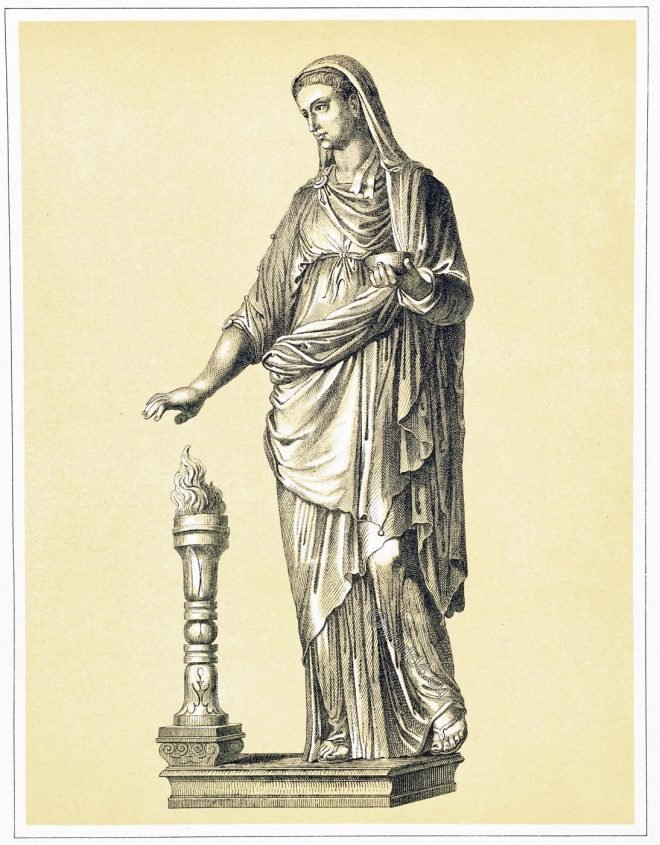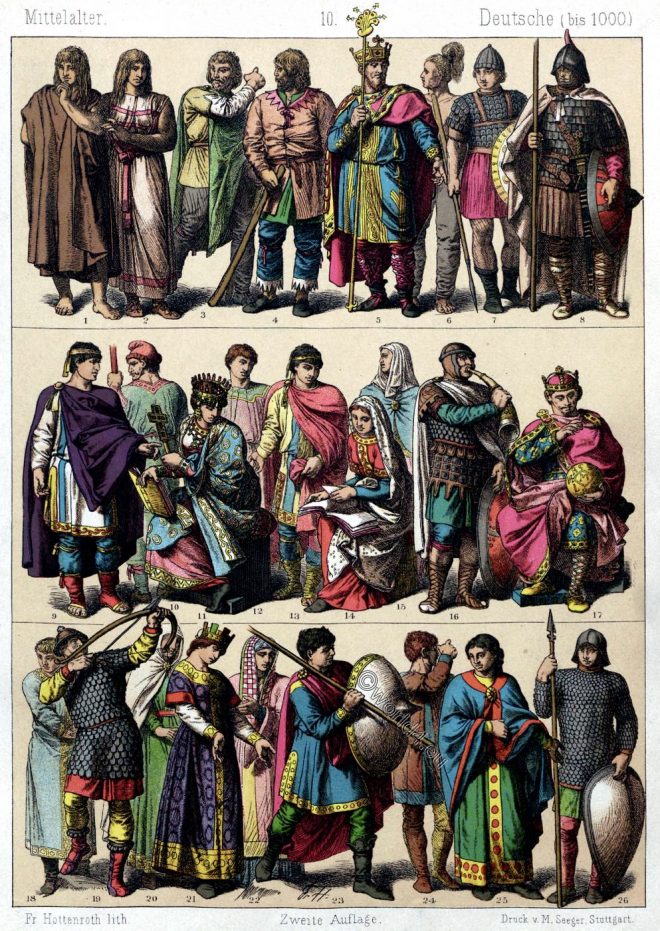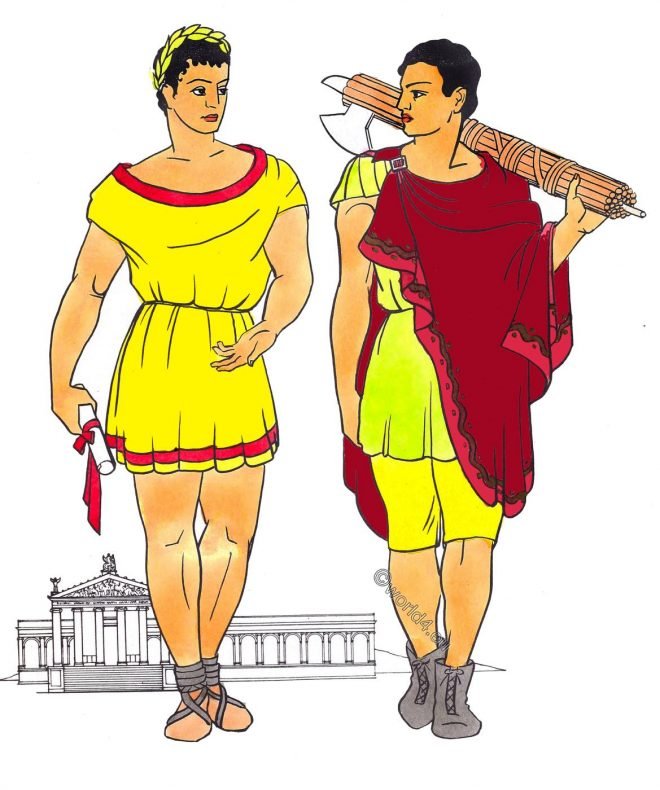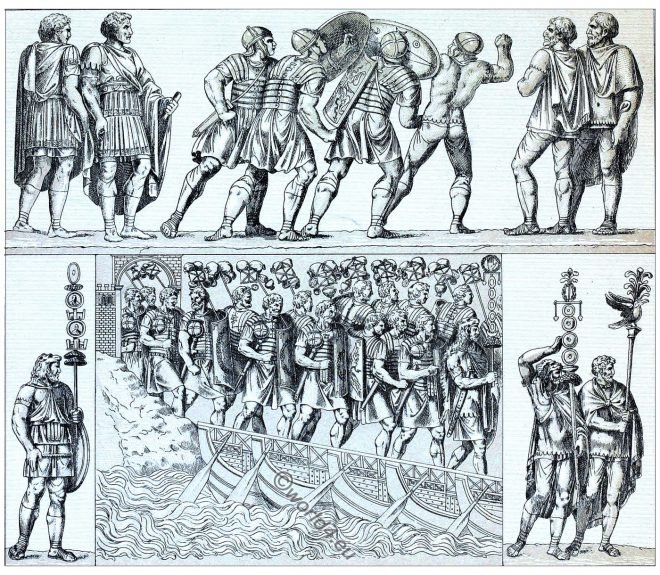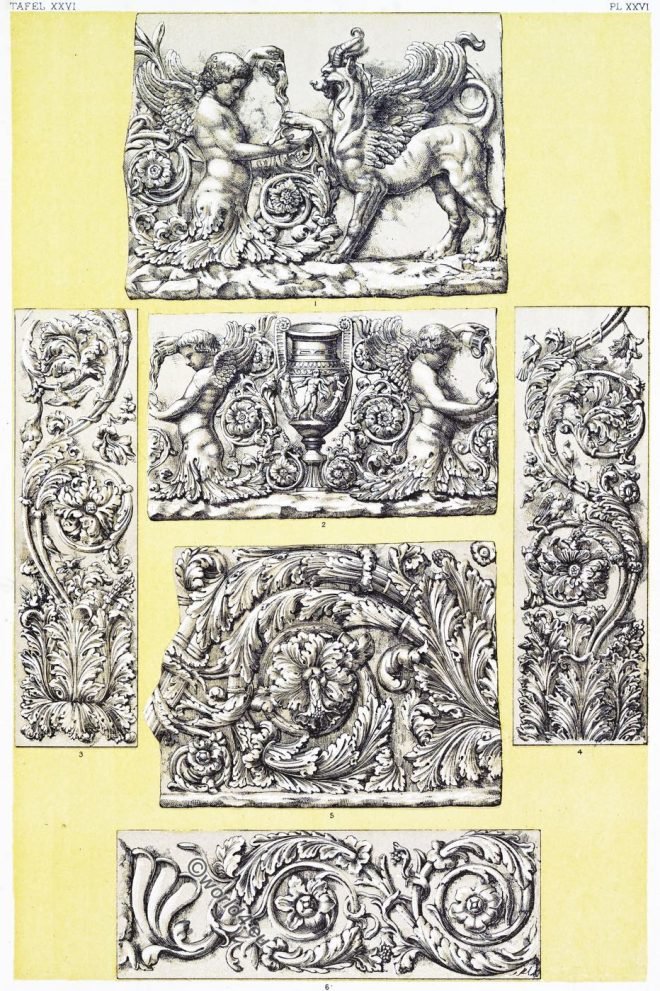The clothing of the vestal virgins consisted of infula, vittae, suffibulum which was held together under the chin by a fibula
Category: Roman
Ancient Roman Costume History
German clothing up to the 10th c.. Goths, Lombards, Merovingians.
German people in the dress at the end of the 10th century. Lombard king. Merovingian Franks. Carolingian Franks. Clothing in the Middle Ages.
The toga of a Roman senator. The armor of a Roman general.
Costume of the Roman Empire 31 B.C.- 476 A.D. The figure symbolizes the two characteristics that made Rome great statesmanship and military power
The usual Roman garment during the Republican Rome.
Rome during the height of its culture. Roman Republic. 500 B.C. – 30 B.C. The toga. The tunica. The abolla.
The Roman army. The legionary soldier. Equipment, assault weapons.
The Roman army. The legionary soldier. The complete equipment of the legionaries. The assault weapons. Military of the Ancient World.
The costume of the Roman women. Republican Rome.
Republican Rome 500 BC – 30 BC.. The costume of the Roman women are very much like the Greek dress.
Greek-Roman furniture. Throne chair, Bisellium, Sella castrensis.
Various seating furniture and its use from the Greek-Roman history. Suppedaneum, Throne chair, Bisellium, Klismos, Diphros, Sella castrensis
The Roman Ornament. Corinthian and Composite Capitals. The Acanthus.
the Corinthian capitals. The pilasters from the Villa Medici are as perfect specimens of Roman ornament as could be found.
Greek-Roman art. Mosaics, painted bas-reliefs and wall paintings.
Greek-Roman art. Mosaics, painted bas-reliefs and wall paintings found in Herculaneum and Pompeii. Ornaments from panels, friezes, borders and mural paintings.
Roman Republic. Senator in the toga. A commoner in the paenula.
Roman Republic 500 BC. – 30 BC. A senator’s toga. The Paenula. A stripe, or clavis, down the center of the tunic, marks the wearer as a senator.

